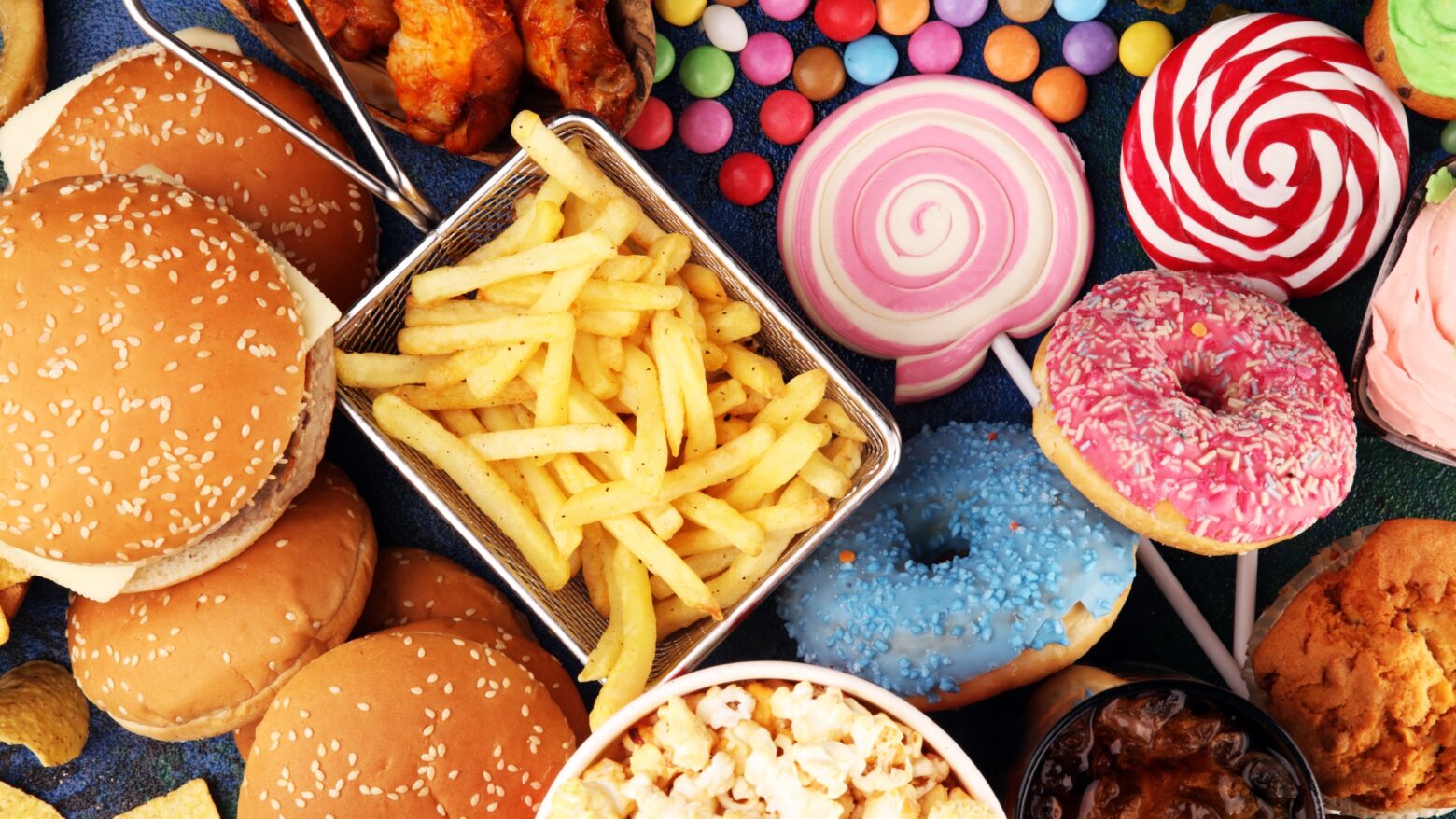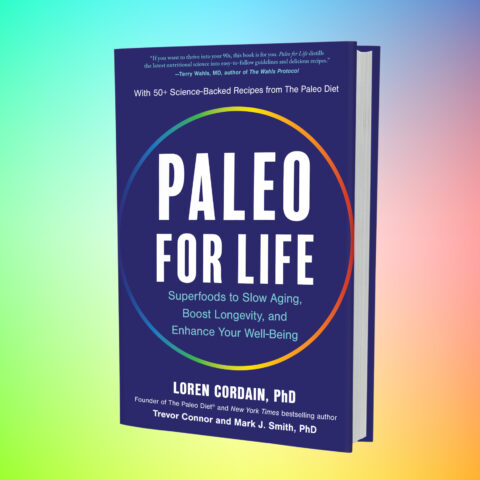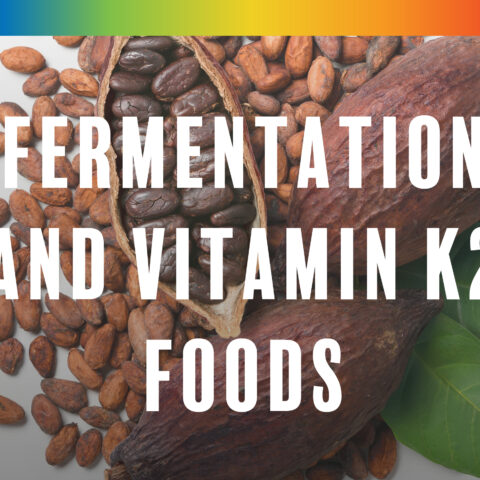What Are Ultra-Processed Foods?

Most people are familiar with processed foods, but have you heard of the term “ultra-processed foods”? While ultra-processed foods are strictly avoided on The Paleo Diet®, some types of processed foods are allowed and are even good for you! Here’s the difference between processed and ultra-processed foods, and which ones to avoid for optimal health.
What Are Processed Foods?
Technically, the word “processed” simply refers to foods that are no longer in their naturally occurring state. At the grocery store, that includes pasteurized milk, cheeses (both raw and pasteurized), bacon, canned beans, and tomato sauce. For The Paleo Diet, processed foods include freeze-dried blueberries, dates, olive oil, and canned sardines.
Processing includes freezing, canning, dehydrating, curing, and fermenting. By that definition you can process the bounty of your home garden, deer hunting trip, or beef cattle operation in your kitchen. Freezing vegetables from your garden, canning tomatoes, dehydrating apples, and making your own sauerkraut or sausage all qualify as processing foods. [1]
Food processing is a traditional practice used for food preservation, but also to change or enhance flavor and texture. It has also been used for convenience, allowing individuals to travel with ready-to-eat foods like pemmican, jerky, or biscuits.
What’s Meant by “Ultra-Processed” Foods?
Ultra-processed foods are those made through techniques that aren’t readily available in a home kitchen. The term was introduced by Brazilian researchers in 2009 as a part of a food classification system called Nova, which recognizes four food categories based on the extent and purpose of their processing. [2]
Group 1: Unprocessed or Minimally Processed Foods
These are natural foods that haven’t been altered, or only slightly altered through minimal processing. The methods used for minimally processed foods include drying, freezing, or pasteurizing, and neither adding nor removing key nutrients. Examples include fresh fruits and vegetables, grains, eggs, milks, and meats.
Group 2: Processed Culinary Ingredients
These include ingredients from Group 1 or are directly from nature, like pressed oils, butter, natural sweeteners, and salt. These ingredients are usually used to season, cook, and prepare foods, but aren’t consumed on their own. Processing techniques for these foods include refining, grinding, milling, drying, and pressing. Examples include salt, dried herbs, spices, wheat flour, cane sugar, honey, and olive oil.
Group 3: Processed Foods
These foods have been altered to enhance flavor or shelf life, but still come directly from whole foods. Processing techniques for this group include canning, bottling, or fermenting. They may involve the addition of sugar, oil, or salt. Examples include canned vegetables, smoked meats, cheeses, and freshly made bread.
RELATED: Why The Paleo Diet Supports a Low-Sodium Diet
Group 4: Ultra-Processed Foods
These are industrial formulations made primarily or entirely from food-derived substances and additives. They often contain few or no whole food ingredients and are engineered to be highly palatable and addictive. Common ingredients include high-fructose corn syrup, artificial flavors and colors, MSG, and preservatives. Examples include soft drinks, candy, instant noodles, and most packaged and fast foods.
Why Ultra-Processed Foods Are Unhealthy
Ultra-processed foods are known to be harmful to our health. It’s no secret that stopping by a fast-food place for French fries or picking up a commercially made pizza isn’t good for us. But what are the reasons ultra-processed foods are unhealthy?
Artificial Ingredients
Ultra-processed foods are typically high in artificial flavors, colors, sweeteners, and preservatives. These ingredients can improve the flavor and shelf life, which is great for preventing food waste. However, they also contribute to chronic health issues, like insulin resistance, obesity, high blood pressure, gut dysbiosis, and cell and tissue damage. [3]
Seed Oils
Ultra-processed foods often contain refined “vegetable” oils like soybean or canola, which are chemically extracted and altered. These oils are also high in inflammatory omega-6 fatty acids. While we need some omega-6s to balance our omega-3 intake, the ratio of omega-6 to omega-3 for our overall diet needs to stay within a natural range of around 2:1 to 1:1 to promote good health. [4]
Seed oils may also contain trans fats, which the World Health Organization says increase the risk of death from any cause by 34% when consumed at high levels. [5] While ultra-processed foods may not have many trans fats per serving, it adds up over time.
Refined Grains and Sugars
The Paleo Diet excludes refined sugars and grains because they weren’t available in Paleolithic times. They can also lead to rapid blood sugar spikes, high levels of omega-6s, and contribute to an imbalanced gut microbiome. [6] By creating imbalance and inflammation, these foods can contribute to metabolic syndrome, cardiovascular disease, and a dysregulated immune response, potentially leading to autoimmune diseases and/or cancer.
Examples of Ultra-Processed Foods to Avoid
Research shows that ultra-processed foods now dominate the diets of high-income countries like the United States and are contributing to poor nutrient status and chronic diseases. In 2016, the United Nations declared 2016-2025 the Decade of Action on Nutrition. [7] As a part of this focus on nutrition, the U.N. adopted the Nova food classification system to determine which foods are healthy and unhealthy for the world population. Nova gives these examples of ultra-processed foods to avoid: [8]
- Baked goods (e.g., breads, pastries, cakes)
- Biscuits and snack bars
- Breakfast cereals
- Carbonated soft drinks, sports drinks, and energy drinks
- Cheese (processed and unprocessed)
- Confections (i.e., candy)
- Dried processed foods (e.g., instant noodles, cake mix)
- Ice cream
- Processed meats and seafood (including meat substitutes)
- Ready meals (e.g., frozen pizza, TV dinners)
- Sauces, dressings, condiments, and spreads
- Soups (canned, instant, frozen)
- Sweet and savory snacks
- Yogurt and soured milk drinks
These foods contribute to the body’s toxic burden, chronic inflammation, immune dysregulation, and even hormone imbalances.
What to Eat Instead of Ultra-Processed Foods
The Paleo Diet focuses on foods and ingredients that would have been available to humans during the Paleolithic era. It emphasizes minimally processed whole foods that are rich in nutrients and free of additives and preservatives, including salt. So, for those following a Paleo way of eating, ultra-processed foods are off the menu, with the focus on whole fruits and vegetables, lean meats, and sustainably raised seafood.
Though you can enjoy some non-Paleo foods on occasion, it’s best to avoid ultra-processed foods when possible. Instead of buying ultra-processed snacks and meals for the non-Paleo side of your menu, try making Paleo-friendly dishes at home where you can control the ingredients that go in every dish and support your health for life. Just remember that like their counterparts, they should still be enjoyed only from time to time.
- In place of sugary, grain-based breads, experiment with grain-free options when the mood strikes for a healthier-for-you baked treat—like banana bread made with almond flour, or biscuits with a sweet potato base.
- Swap cereal for grain-free granolas and enjoy with a splash of Paleo-friendly nut milk or a dollop of homemade non-dairy yogurt.
- As alternatives to soft drinks and energy drinks, explore our Non-Alcoholic Beverages page for ideas on flavorful-yet-nutritious libations, with or without caffeine.
- Sweets aren’t entirely off limits on a Paleo diet. Indulge in homemade gummies or cacao-dipped fruits that are free of harmful additives. Ice cream can also be enjoyed as an occasional treat.
- Whether you’re in need of the classics or something more unique, you can DIY your own condiments, dressings, marinades, and salsas with recipes from our Paleo Sauces page.
- Skip the storebought soups and stir up a batch of your own made with whole foods, like this Butternut Squash Pear Soup.
- See our suggestions of Paleo sweet, sour, or crunchy snacks to grab when the cravings hit or convenience dictates.
References
- Nummer B. National Center for Home Food Preservation – National Center for Home Food Preservation [Internet]. nchfp.uga.edu. 2002. Available from: https://nchfp.uga.edu/resources/entry/historical-origins-of-food-preservation
- Monteiro CA. Nutrition and health. The issue is not food, nor nutrients, so much as processing. Public Health Nutrition [Internet]. 2009 May;12(5):729–31. Available from: https://www.cambridge.org/core/journals/public-health-nutrition/article/nutrition-and-health-the-issue-is-not-food-nor-nutrients-so-much-as-processing/0C514FC9DB264538F83D5D34A81BB10A
- Rinninella E, Cintoni M, Raoul P, Gasbarrini A, Mele MC. Food Additives, Gut Microbiota, and Irritable Bowel Syndrome: A Hidden Track. International Journal of Environmental Research and Public Health. 2020 Nov 27;17(23):8816. Available from: https://pmc.ncbi.nlm.nih.gov/articles/PMC7730902/
- Simopoulos AP. The importance of the ratio of omega-6/omega-3 essential fatty acids. Biomedicine & Pharmacotherapy [Internet]. 2002 Oct;56(8):365–79. Available from: https://www.sciencedirect.com/science/article/abs/pii/S0753332202002536
- WHO. Nutrition: Trans fat [Internet]. www.who.int. 2018. Available from: https://www.who.int/news-room/questions-and-answers/item/nutrition-trans-fat
- Kawano Y, Edwards M, Huang Y, Bilate AM, Araujo LP, Tanoue T, et al. Microbiota imbalance induced by dietary sugar disrupts immune-mediated protection from metabolic syndrome. Cell [Internet]. 2022 Aug 29;0(0). Available from: https://www.cell.com/cell/fulltext/S0092-8674(22)00992-8#secsectitle0080
- Monteiro CA, Cannon G, Moubarac JC, Levy RB, Louzada MLC, Jaime PC. The UN Decade of Nutrition, the NOVA food classification and the trouble with ultra-processing. Public Health Nutrition [Internet]. 2018 Mar 21;21(1):5–17. Available from: https://www.cambridge.org/core/journals/public-health-nutrition/article/un-decade-of-nutrition-the-nova-food-classification-and-the-trouble-with-ultraprocessing/2A9776922A28F8F757BDA32C3266AC2A
- Food systems and diets: Facing the challenges of the 21st century [Internet]. 2017. Available from: https://glopan.org/sites/default/files/ForesightReport.pdf
Betsy Schroeder
Betsy does research and writing for a few different websites in the natural health field after taking Masters level courses in Nutrition & Functional Medicine through the University of Western States.
More About The Author




